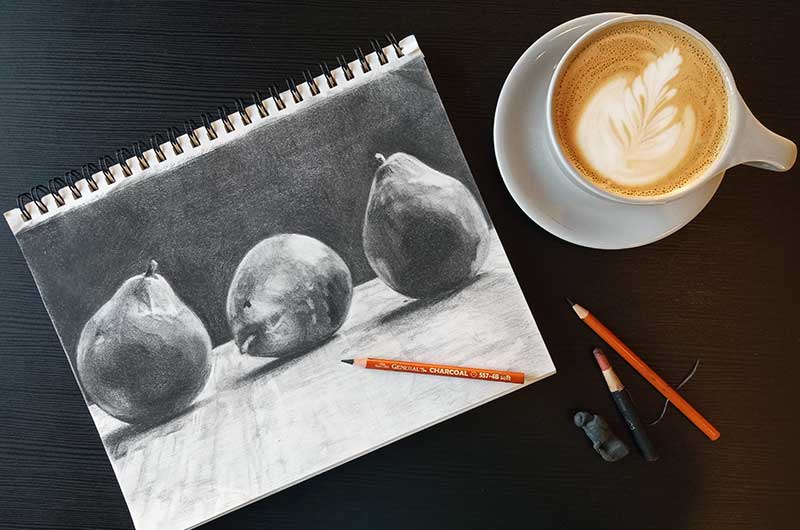getRealism
Want to create realism in art? You've come to the right place.
Creating Art & Realism: Learn How To Paint and Draw Realistically
3 Essential Elements For Painting And Drawing Realistic Representational Artwork

3 tips for creating realism in art.
- Create Believable Proportions
- A Natural Range of Tonal Values
- Mix Natural-Looking Paint Colors
Establish Believable Proportions & Scale
3 Essential Elements For Painting And Drawing Realistic Representational Artwork

3 tips for creating realism in art.
- Create Believable Proportions
- A Natural Range of Tonal Values
- Mix Natural-Looking Paint Colors
Establish Believable Proportions & Scale
Proportion is a fundamental principle of art that cannot be overlooked. It defines the size of one feature in relation to another. For instance, if the eyes are drawn too large on a face, it’s going to look unnatural. Similarly, if hands are disproportionately big compared to the rest of the body, the artwork will feel out of sync.
To achieve true realism, you must master your proportions. They don’t have to be perfect, but they must be credible. Scale is also crucial; it refers to how the size of an object compares to other objects. If an object is overscaled in its environment, it disrupts the realism. Drawing and painting objects at the correct size is vital.
A Natural Range of Tonal Values
Tonal value, which pertains to lightness and darkness, is critical. If your darks are excessively dark or your lights are too bright, your artwork will resemble an illustration rather than a realistic piece.
A natural range of tonal values is essential for creating the illusion of realism. Values can be subtler than you think. Observe the nuances of light and shadow; they are key to establishing a value range that feels natural and realistic.
Mix Natural-Looking Paint Colors
Stop using paint straight from the tube—it’s often overly bright and saturated. To convey realism, you must work with more subdued, natural colors. Mastering the neutralization of paint colors is indispensable for bringing your vision to life.
For example, green paint straight from the tube may look garish. By adding a small amount of red, you can create a much more natural green. Understanding how to mix natural colors is essential for any realistic painting.
My Personal Struggle with Realism
I wanted my drawings and paintings to look realistic but often felt they fell short. When I sought advice from professors and other artists, their responses were usually vague, suggesting I "embrace my style."
No one seemed to know what I could improve. In retrospect, I realize that they may not have had the answers either. The modern art education system can be quite flawed, which left me overwhelmed with information without a clear path forward.
After extensive analysis, research, and struggle, I identified three simple yet crucial aspects. If you miss even one of these, your work won't look realistic. The human eye is proficient at recognizing patterns, especially in human faces. If proportions are not believable, viewers will instinctively sense that something is amiss. While they may not be able to articulate what's wrong, they will know it's off.
Artists often pride themselves on being unique and original. However, realism fundamentally requires accurately mirroring the reality of the person, place, or object you are depicting.
Making a Copy
Here's the bottom line: If you distort or elongate forms, they won't look realistic. If your proportions are too large, too small, or otherwise skewed, they will not register as authentic. If your darks are overly dark or your lights excessively bright, the result will lean more towards illustration or cartoon. Using bright, saturated colors instead of subtle, natural hues will undermine your realism.
Failing to accurately replicate reality means failing to create realism.
If your work lacks in any of these critical areas, now's the time to address it. Have I perfected all of this? Not yet, but I have made significant strides since uncovering these key principles.
I call them “secrets” because, despite my art education, I didn't learn these essential concepts. Professors often examined my work but struggled to pinpoint these three issues—a frustrating reality, yet one I learned to navigate.
Now that you are aware of these three essential elements, take charge and fix them. If you can tackle this on your own, fantastic! If you need further assistance, stay tuned for my upcoming guide on drawing and painting realistic artwork.
As a contemporary realist artist, you're an observer, designer, and visionary. You're a creative maker, an artisan, well on your way to mastering your craft.
No lack of resources, support, or lack of education can stop you. The most likely obstacle you'll encounter on your way to mastery will be you. It's time to get out of your own way.
I'm trying to take my work to new levels. I'm sharing everything I learn along the way. My goal is to help you take your art to a higher level.
Want to make your drawings and paintings look more realistic? Let's get started.